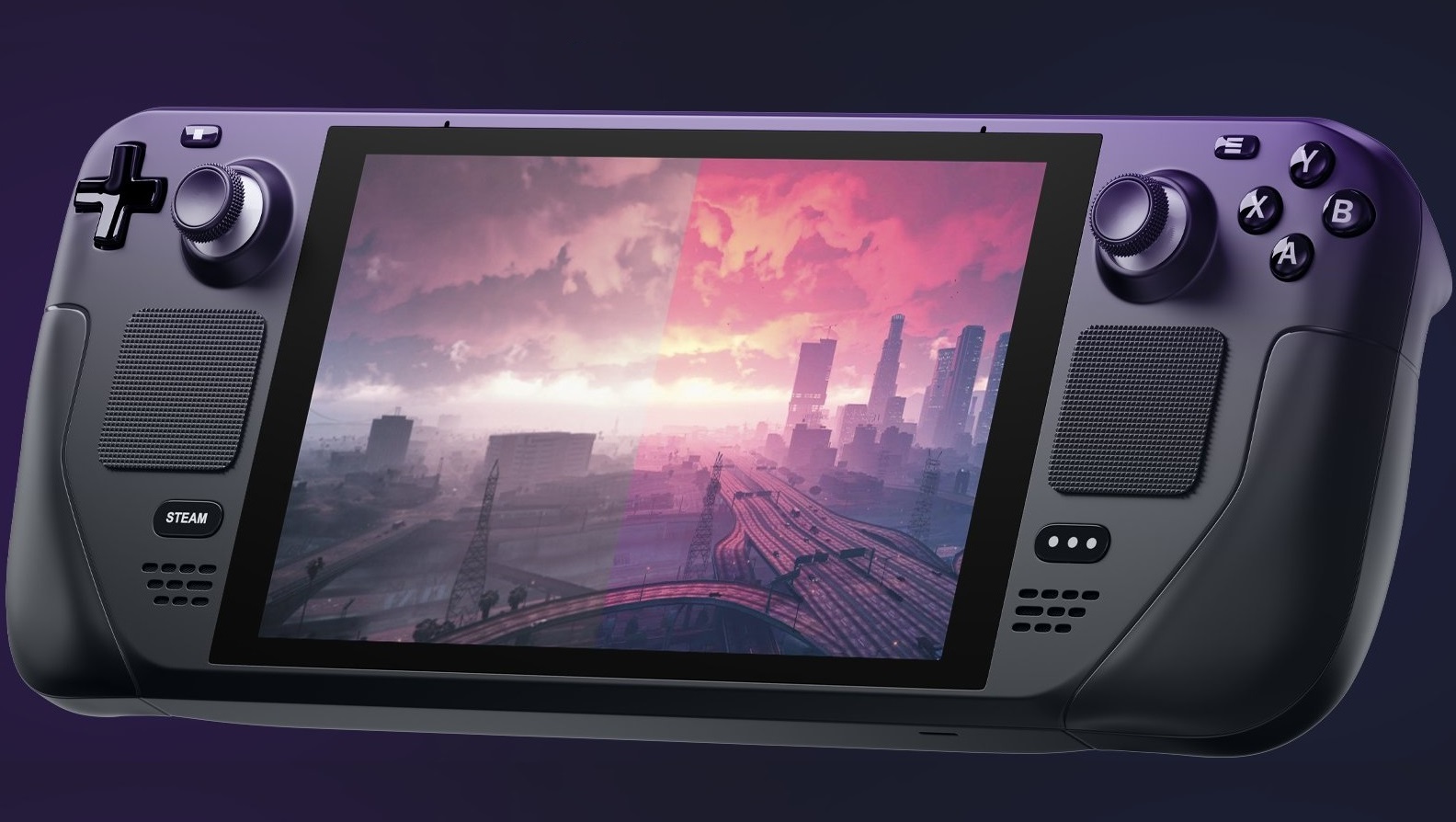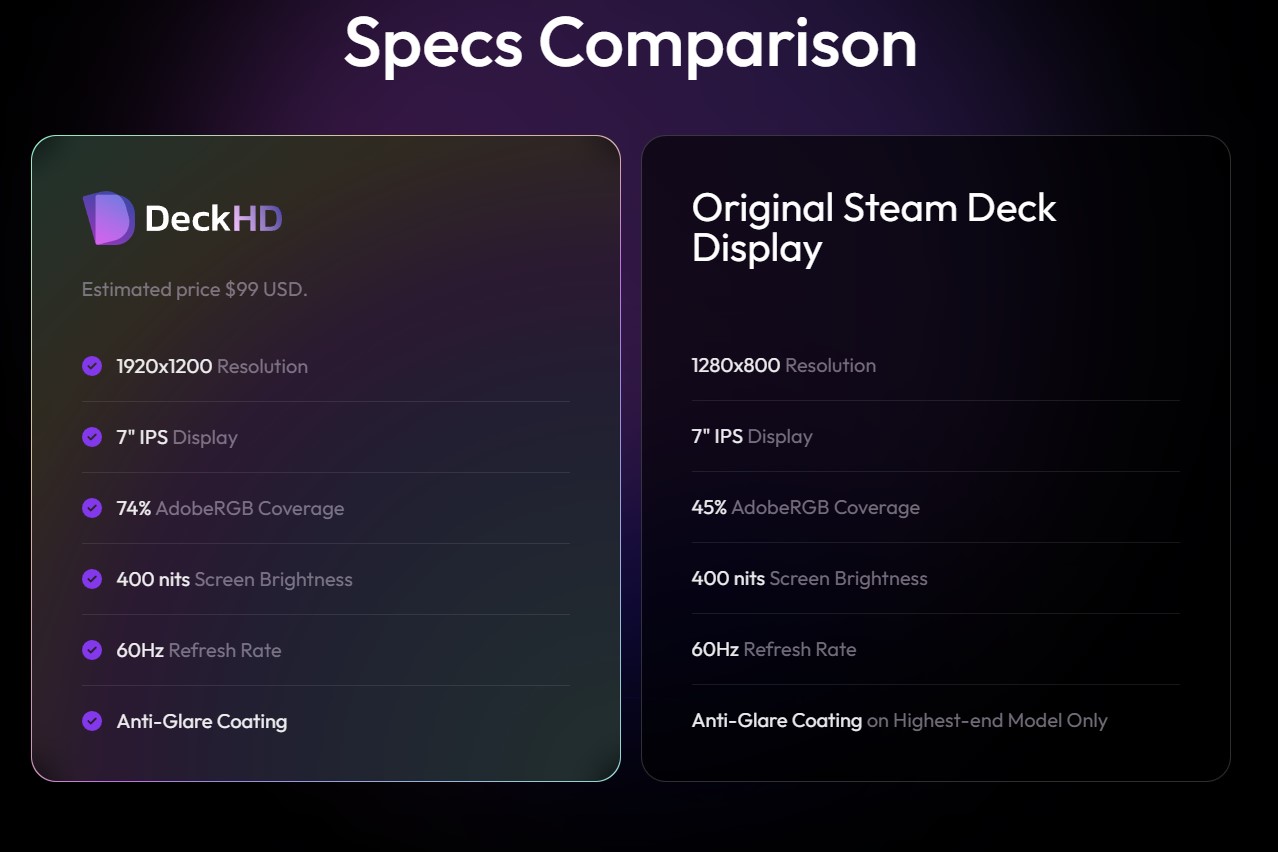
Mobile tech company FX Technology has announced that it will begin offering an aftermarket screen replacement for the Steam Deck under the brand DeckHD. These new panels do not yet have a price, but will offer a higher 1920x1200 resolution with 30% more AdobeRGB coverage (better color accuracy, basically), and the same anti-glare coating as Valve's top-price Deck.

The base screen on the Deck is, well, fine. It has a just-squeaking-by-as-HD 1280x800 screen, and while I'm not especially picky on the color accuracy or vibrancy front, I've definitely noticed a bit of light bleed, mostly on loading screens when it goes all black. The Deck's base screen is a top contender for a revamp on future models or even as a DIY project, but I don't think DeckHD is the way to go—especially given our last interview with Valve about the possibility of a Future OLED Deck.
"The screen's at the core of the device," Valve's Pierre-Loup Griffais told us in March. "Everything is anchored to it. Basically everything is architected around everything when you're talking about a device that small. I think it would be a bigger amount of work than people are assuming it would be [...] the idea that you could just swap in a new screen and be done—it would need more than that to be doable."
The way the Deck is put together, the screen is the very last thing you have access to after all the internals, meaning a nearly full disassembly and reassembly of the device, as well as some finagling with a heat gun to take care of the adhesive holding the original screen in place. For all that work, I'd want to have no misgivings or compromises in the screen I'm putting in, and from what Griffais told us, it'd likely take some software work to get the best performance out of a different panel.
I scoff at the resolution arms race in general, and especially so on smaller devices with naturally pixel-dense screens and difficult battery constraints. The Deck and Nintendo Switch's 800p/720p screens are a real sweet spot on resolution to battery, and I just don't think a resolution bump on this screen size would be worth the hit to battery life.
Further complicating the matter, the Deck's mobile hardware means new games can already struggle performance-wise at 800p or even lower, meaning that this expenditure and following DIY project would be in service of a questionably-necessary resolution bump to older and less-demanding games. When I think of my ideal next-gen Steam Deck screen, my mind turns to the vibrant, but still low-resolution offerings of the Nintendo Switch OLED or even the original model PS Vita's OLED display, not the battery-hungry, overkill über pixel dense 1080p or even 1440p screens offered by gaming laptops and competing handheld PCs.
Still, it's an interesting first for the Deck, whose modularity and open design remains one of its most exciting features. IFixit has a full selection of replacement parts for Deck repair, while upgrade-wise you have your pick of drift-proof, Hall Effect analogue sticks or even 1-2 TB replacement SSDs. As for screen upgrades, I'd wait to invest time and money into such a challenging DIY project until there's a wider variety of options available. DeckHD estimates it will cost $99, but has no set release date, and there's a waitlist on its website.







